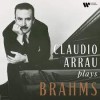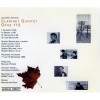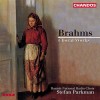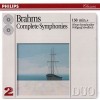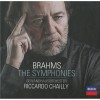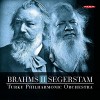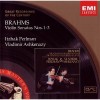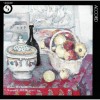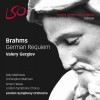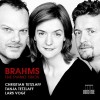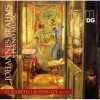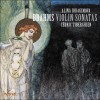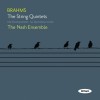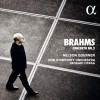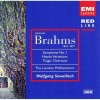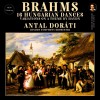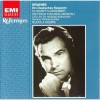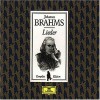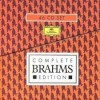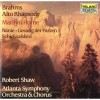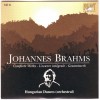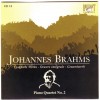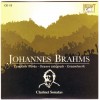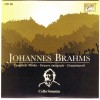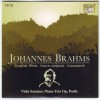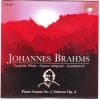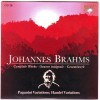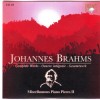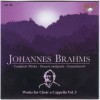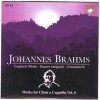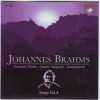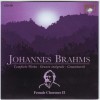| Country: | Germany |
| Period: | Romantique |
Biography
Johannes Brahms was a well known German composer and pianist, who also achieved a great honor as one of the leading musicians of the Romantic period.
Brahms was born on May7, 1833 in Hamburg. He spent much of his professional life in Vienna, Austria, where he was a leader of the musical scene. His father, Johann Jakob Brahms, was also a well known musician of that time, who travelled from Dithmarschen to Hamburg, in the search of better career as a town musician. Johann Jakob was proficient on several instruments
Brahms mother name was Henrika Christiane Nissen, who was a very corporative and nice woman. Brahms, father was son his first musical teacher. Brahms was naturally gifted musician and started to learn piano from the age of seven with best Otto Friedrich Willibald Cossel.
Form the same age, Brahms Johannes also learned the cello. After the completion of Johannes’s early piano lessons with Otto Cossel, he studied piano with Eduard Marxsen, who had studied in Vienna in the company of great musician like; Ignaz von Seyfried (a student of Mozart) and Carl Maria von Bocklet (a best friend of Schubert).
In the beginning of his career, the young Brahms performed at few public concerts in Hamburg, but did not become successful and popular pianist, until the age of nineteen. At this age, Brahms continually participated in the different music concerts and displayed his talent, as a soloist, accompanist, or participant in chamber music.
Brahms was the best soloist at the premieres of his Piano Concerto that were performed in 1859 and 1881, respectively. He participated in many choirs from his teen age, and soon became a proficient choral and orchestral conductor.
He achieved much popularity and considerable influence in the nineteenth century, by the beautiful comments of Hans von Bülow, who was a conductor. Brahms also joined the company of with Johann Sebastian Bach and Ludwig van Beethoven.
Brahms was also a student of Robert Schumann, who was really amazed by the talent of 20 year-old Brahms. Joachim had given Brahms a letter of introduction to Robert Schumann, and after a walking tour in the Rhineland.
When Brahms reached Düsseldorf, he was welcomed by Schumann family. Later Brahms published an article entitled "Neue Bahnen" in the October issue of the journal Neue Zeitschrift für, in 1853.Musik always alert the public by making a prophecy about the Brahms music passion, and often claimed as
"Destined to give ideal expression to the times."
His musical work is deeply rooted in structural and compositional techniques of the Baroque and Classical masters. As a virtuoso pianist, he also got an opportunity of working with many leading performers of his time, including the pianist Clara Schumann and the violinist Joseph Joachim.
Brahms composed chamber ensembles, symphony and orchestra, for voice and chorus. Many of Brahms works have now become staples of the modern concert repertoire.
Brahms’s chamber works include; three string quartets, two string quintets and two string sextets, a clarinet quintet, a clarinet trio, a horn trio, a piano quintet, three piano quartets and four piano trios.
Brahms Johannes was also a traditionalist and an innovator. He always aimed at the honor and "purity" of venerable "German opera structures and advance them into a Romantic idiom, harmony and melody.
No doubt, Brahms Johannes was a master of counterpoint, the complex and highly disciplined method of composition. His contribution and craftsmanship for music have been always admired by subsequent figures like; the progressive Arnold Schoenberg and the conservative Edward Elgar.
Thus due to the diligent and highly constructed nature of Brahms's works, it have been continuously inspiring the generation of composers, since the history.
Brahms’s chamber works include; three string quartets, two string quintets and two string sextets, a clarinet quintet, a clarinet trio, a horn trio, a piano quintet, three piano quartets and four piano trios.
He composed a lot of orchestra, including two serenades, four symphonies, two piano concertos (one for Violin Concerto while other for Double Concerto for violin & cello), and two orchestral overtures. A lot of Brahms’s contemporaries declared that his music is also academic like; the Academic Festival Overture and the Tragic Overture.
Brahms also wrote several instrumental sonatas with piano, including three for violin, two for cello and two for clarinet. Johannes’s solo piano works range from his early piano sonatas and ballades to his late sets of character pieces.
Most of Brahms's works represent the different type of variation that include; the Variations in form and Fugue, vibrations in Theme, variations in solo piano composition and variations for orchestra.
Naturally, Johannes Brahms was a significant Lieder composer, who composed over two hundred songs. His chorale preludes for organ op. No. 122, which he wrote just before his death, have become an important part of the organist's repertoire.
Brahms composed several settings for piano and voice of about 144 German folk songs. Many of his lieder reflect folk themes or depict scenes of rural life. Brahms’s Hungarian dances were among his most profitable compositions.
His also composed the Clarinet Trio Op. 114, Clarinet Quintet Op. 115 (1891), and two more Clarinet Sonatas Op. 120 (1894), which were very popular in that time. Similarly Brahms wrote several cycles of piano pieces that includes; Opp. 116–119, the Four Serious Songs, Op. 121 (1896), and the Eleven Chorale Preludes for organ Op. 122 (1896).
Although, Brahms was a serious composer and has a large and complex musical structures, but in whole of his life; unlike the other well known composers of his time, those were commercially successful; Brahms just composed a small scale of work with popular intent.
Brahms always preferred to compose absolute music that did not present any explicit scene or narrative. He never wrote an opera or a symphonic poem. He always tried to maintain a Classical sense of form and order in his works. He also loved the Classical composers like; Mozart and Haydn.
In the early life of his career, he collected some editions and autographs of Classical works, and edited them in his coming work. Brahms was also concentrated on the music work of pre-classical composers, including; Giovanni Gabrieli, Johann Adolph Hasse, Heinrich Schütz and especially Johann Sebastian Bach.
Similarly, the influence of early Romantic composers is also noticed in his work, particularly Schumann who was encouraged with Brahms as a young composer.
There are various views about the religion of Brahms, but it is still unclear. Most of his showed that he was influenced by Bible. Brahms’s "Requiem" employs biblical texts and conveys a humanist message, by omitting the words about salvation or immortality, and just focuses on the survival rather than the death.
Most of Brahms’s large choral work like; A German Requiem, did not show a real setting of the liturgical Missa pro defunctis, but a setting of texts, which he selected from the Lutheran Bible. His most of Requiem work was composed in three major periods of Brahms's life, the majority of the Requiem was composed after the death of his mother, in 1865.
An analysis of Brahms work showed that, he always tried to look both in backward and forward. His output was often bold in its exploration of harmony and rhythm, which proved that Brahms was influence by both conservative and modernist composers.
Like Beethoven, Brahms was also fond of nature and often concentrated to depict its beauty. He usually walked along the country side or in the wood, around Vienna. He also loved children, due to their innocent look and often kept penny candy with him, in order to distribute among them. To adults Brahms was often brusque and sarcastic, and he sometimes alienated other people.
Brahms had also kept a life long friendship with Johann Strauss II, but there was a great contrast in their nature as composers. They both struggled hard to get the Theater An der Wien in Vienna for the presentation of Strauss's operetta Die Göttin der Vernunft, in 1897.
Brahms became very popular and financially successful in1860s, due to a wide demand of his work. However, he still preferred to spend a modest life, and start living in a small apartment with a housekeeper. Brahms never like to save money, he mostly gave away much of money to his relatives and friends. He also donated money for the support of several young musicians.
Brahms was an uncompromising perfectionist, he destroyed much of his early works and left some of them unpublished. Due to his extremely perfectionist nature, he also destroyed a beautiful Violin Sonata, which Brahms performed with Reményi and violinist Ferdinand David. It has been reported that, once Brahms claimed to have destroyed 20 string quartets before its publication, in 1873.
On 14 September 2000, he was honored by the German Hall of Fame, at this time, Brahms was introduced, as 126th "rühmlich ausgezeichneter Teutscher" and 13th composer, with a bust by sculptor Milan Knobloch.
In 1868, Brahms's A German Requiem, which was his largest choral work conformed his European reputation, just soon after its premiere, in Bremen; and led many critics to accept that Brahms had fulfilled Schumann's prophecy.
In 1889, Theo Wangemann, who was a representative of American inventor at the time of Thomas Edison, visited the Vienna and invited all Vienna composers including Brahms, in order, to conduct an experimental recording.
At that time, Brahms not only impressed Wangemann, but also other composers, by playing an abbreviated version of his first Hungarian dance on the piano. This recording was soon issued on an LP of early piano performances.
In 1856, after the death of Schumann at the sanatorium, Brahms started to travel Hamburg to Detmold. In Hamburg, he formed and conducted a ladies' choir, while in Detmold, he was serving as a court music teacher and conductor.
Brahms first visited Vienna in 1862, stayed there through out the winter. In 1863, Brahms was appointed as a conductor of the Vienna Singakademie, later, he resigned from this position.
Since 1872 to 1875, Brahms served as a director of the concerts of the Vienna, Gesellschaft der Musikfreunde but he did not accept any formal position here. Similarly in 1877, he declined an honorary doctorate of music from University of Cambridge, however, accepted the same degree from the University of Breslau, in 1879.
Although, Brahms had been steadily composing successful music throughout the decade of 1850s to 1860s, but in the same period his music had evoked some critical responses. For example, his Piano Concerto No. 1 had been badly received in some of its early performances.
Similarly, a lot of his works were labeled as old fashioned by the 'New German School' whose principal figures included; Liszt and Richard Wagner. Although, Brahms never criticized the work of musician and always admired the music composed by Wagner and Liszt, as the work of great pianist, but there still remained a conflict between the two schools of thoughts, which soon, embroiled the all European music and later, called as, “the War of the Romantics”.
In 1890, when Brahms was about 57 years old, he resolved to give up composing. However, it seed very difficult to him to abide by his decision, later, he began composition writing and soon produced a number of musical masterpieces.
While composing the Op. 121 songs, he was suffered from cancer, soon his condition gradually worsened and pathetic. After all, Johannes Brahms died on April 3, 1897 and was buried in the Zentralfriedhof in Vienna.







![Essential Organ [CD 1 of 2]](http://static.classicalm.com/repository/collection-cover/small/1307-img1359479519576972.jpg)
![Piano trios (Gilels, Kogan, Rostropovich) [5 CD]](http://static.classicalm.com/repository/collection-cover/small/219-img1316559969860933.jpg)

![Russian legends - Mstislav Rostropovich [10 CD]](http://static.classicalm.com/repository/collection-cover/small/275-img1319023256353734.jpg)
![Russian legends - Emil Gilels [16 CD]](http://static.classicalm.com/repository/collection-cover/small/261-img1318115683212190.jpg)
![Russian legends - Evgeny Kissin [9 CD]](http://static.classicalm.com/repository/collection-cover/small/265-img1318196902541222.jpg)
![Russian legends - David Oistrakh [20 CD]](http://static.classicalm.com/repository/collection-cover/small/267-img1318418713553266.jpg)
![Russian legends - Viktor Tretiakov [6 CD]](http://static.classicalm.com/repository/collection-cover/small/271-img1318800770253179.jpg)
![Steinway Legends - Wilhelm Kempff [2 CD]](http://static.classicalm.com/repository/collection-cover/small/247-img1316898358255855.jpg)
![Steinway Legends - Arturo Benedetti Michelangeli [2 CD]](http://static.classicalm.com/repository/collection-cover/small/231-img1316813313531382.jpg)
![Steinway Legends - Emil Gilels [2 CD]](http://static.classicalm.com/repository/collection-cover/small/235-img1316856590105306.jpg)
![Steinway Legends - Martha Argerich [2 CD]](http://static.classicalm.com/repository/collection-cover/small/237-img1316861995833914.jpg)

![Top 100 der Klassik [CD 1 of 5]](http://static.classicalm.com/repository/collection-cover/small/1364-img1372589941705257.jpg)
![Top 100 der Klassik [CD 2 of 5]](http://static.classicalm.com/repository/collection-cover/small/1365-img1372592354874210.jpg)
![Top 100 der Klassik [CD 4 of 5]](http://static.classicalm.com/repository/collection-cover/small/1367-img1372594763111487.jpg)
![Deutsche Grammophon Classic Gold [CD 1 of 3]](http://static.classicalm.com/repository/collection-cover/small/1314-img1361380277394437.jpg)
![Top 100 der Klassik [CD 5 of 5]](http://static.classicalm.com/repository/collection-cover/small/1368-img1372595835213275.jpg)


![Christmas Adagios [CD1 of 2]](http://static.classicalm.com/repository/collection-cover/small/1219-img1354498625885822.jpg)

![Tresors des Requiem [CD 1 of 4]](http://static.classicalm.com/repository/collection-cover/small/1377-img1374572669870076.jpg)




![Nouvelles Couleurs de l'Orgue [CD 1 of 2]](http://static.classicalm.com/repository/collection-cover/small/1023-img1343994250261534.jpg)

![The Top 100 Masterpieces of Classical Music 1685-1928 [CD7of10]](http://static.classicalm.com/repository/collection-cover/small/1359-img1372446248695097.jpg)
![The Top 100 Masterpieces of Classical Music 1685-1928 [CD8of10]](http://static.classicalm.com/repository/collection-cover/small/1360-img1372447516287674.jpg)



![Great European Organs. 53-Keith John [Kallio Church Helsinki]](http://static.classicalm.com/repository/collection-cover/small/945-img1342345508657217.jpg)















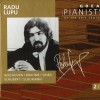










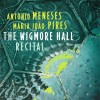
















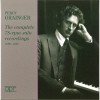


![Martha Argerich Edition - Solos & Duos [CD3of6]](http://static.classicalm.com/repository/disk-cover/small/3583-img1404478918553770.jpg)







![Pablo Casals - The Complete Published EMI Recordings (1926 - 1955) [CD4of9]](http://static.classicalm.com/repository/disk-cover/small/3589-img1404550021279791.jpg)
![Pablo Casals - The Complete Published EMI Recordings (1926 - 1955) [CD8of9]](http://static.classicalm.com/repository/disk-cover/small/3593-img1404564358719867.jpg)



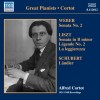

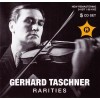



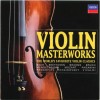




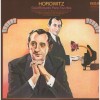



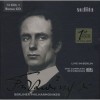




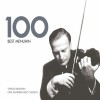










![The 100 Most Beautiful Melodies [CD 2 of 6]](http://static.classicalm.com/repository/disk-cover/small/2911-img1361460313445296.jpg)










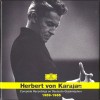





















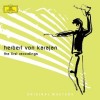












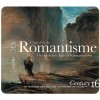
![Anthology of the Royal Concertgebouw Orchestra: Live the Radio Recordings 1960-1970 [CD6]](http://static.classicalm.com/repository/disk-cover/small/3443-img1395222424366205.jpg)










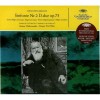
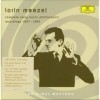


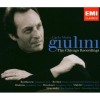



![Casals Festivals at Prades [CD3 of 13]](http://static.classicalm.com/repository/disk-cover/small/3621-img1404992099346821.jpg)
![Casals Festivals at Prades [CD5 of 13]](http://static.classicalm.com/repository/disk-cover/small/3623-img1404993479321250.jpg)
![Casals Festivals at Prades [CD8 of 13]](http://static.classicalm.com/repository/disk-cover/small/3626-img1404998086699999.jpg)








![Rita Streich - The Viennese Nightingale [CD 6 of 8]](http://static.classicalm.com/repository/disk-cover/small/3039-img1372360428686209.jpg)
![Helene Grimaud - The Piano Collection [CD4of5]](http://static.classicalm.com/repository/disk-cover/small/3556-img1403791093771568.jpg)
![Hélène Grimaud - The Piano Collection [CD5of5]](http://static.classicalm.com/repository/disk-cover/small/3557-img1403791615331954.jpg)

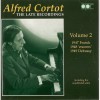














![Wilhelm Furtwaengler 1942-1944 Vol. 2 [CD 2of 5]](http://static.classicalm.com/repository/disk-cover/small/2972-img1365439766457246.jpg)



































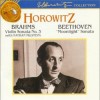



![The Great Violin Concertos (Menuhin Yehudi) [CD 3 of 3]](http://static.classicalm.com/repository/disk-cover/small/3061-img1375715798706183.jpg)


![Herbert von Karajan - Sternstunden der Musik [CD3of3]](http://static.classicalm.com/repository/disk-cover/small/3679-img1406716183842579.jpg)












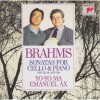





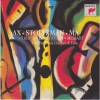
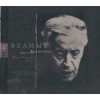

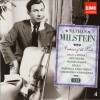
![Sviatoslav Richter - The Beginning of the Legend [4 CD]](http://static.classicalm.com/repository/disk-cover/small/823-img1315991321531276.jpg)


![The Complete Josef Hofmann, Volume 2 [2 CD]](http://static.classicalm.com/repository/disk-cover/small/827-img1316005912356728.jpg)

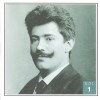


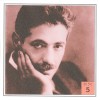





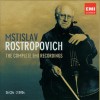
![Richter in Hungary, Volume 1 [2 CD]](http://static.classicalm.com/repository/disk-cover/small/875-img1316349914365481.jpg)















![The Heifetz Collection, Volume 8 [2 CD]](http://static.classicalm.com/repository/disk-cover/small/929-img1316982090166364.jpg)
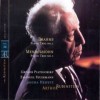

![The Heifetz Collection, Volumes 11 - 15 [5 CD]](http://static.classicalm.com/repository/disk-cover/small/939-img1317071875601277.jpg)





![The Heifetz Collection, Volume 19 [2 CD]](http://static.classicalm.com/repository/disk-cover/small/947-img1317413695600051.jpg)


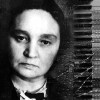



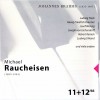
![The Heifetz Collection, Volume 1 [3 CD ]](http://static.classicalm.com/repository/disk-cover/small/715-img1315088819334029.jpg)



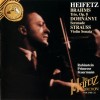


![The Heifetz Collection, Volume 4 [2 CD]](http://static.classicalm.com/repository/disk-cover/small/721-img1315251228394533.jpg)


![The Heifetz Collection, Volume 5 [2 CD]](http://static.classicalm.com/repository/disk-cover/small/723-img1315251789683087.jpg)












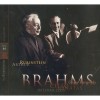


















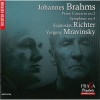

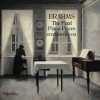

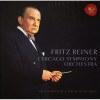




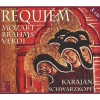



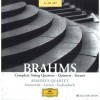












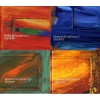








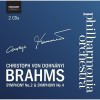
























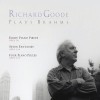













![Brahms - Ein deutsches Requiem [Schwarzkopf, Fischer-Dieskau - Klemperer]](http://static.classicalm.com/repository/composition-cover/small/16691-img1381500994592842.jpg)















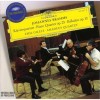








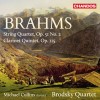















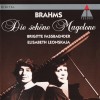
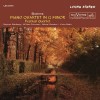
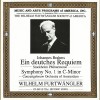
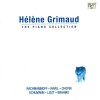









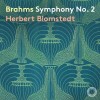























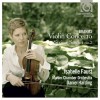


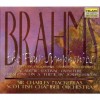



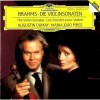



































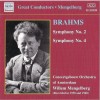



![Brahms - Das Gesamtwerk für Klavier [5CD's] - Gerhard Oppitz](http://static.classicalm.com/repository/composition-cover/small/44144-img1665680641449918.jpg)
